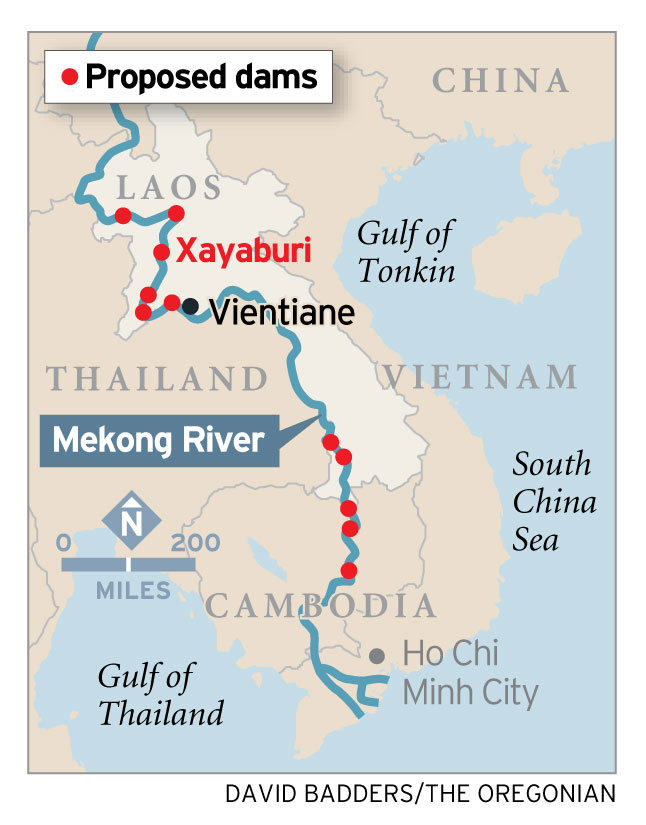The government has informed the Mekong River Commission (MRC) that it will proceed with the planned development of a new Mekong hydropower project in Pakbaeng district, Oudomxay province.
The MRC Secretariat said on its website that it has received notification from the Lao government that Laos will undertake the formal process of prior consultation on the planned 912MW hydropower scheme in the northern province.
The run-of-river dam will be built on the Mekong mainstream, and is designed to discharge a flow of 5,771.2 cubic metres of water per second, according to the MRC.
The Lao National Mekong Committee Secretariat submitted on November 4 a detailed description of the planned project to the MRC Secretariat for its review and further action to inform other member countries about the project’s scope and other requirements under the prior consultation process.
Within the next month, the MRC Secretariat will review the document and verify its compliance with the rules before forwarding the case to the MRC’s Joint Committee, which comprises representatives of the four member countries at the head of department level where the consultation takes place.
The prior consultation is part of the MRC’s procedural rules on cooperation on water use in the Mekong mainstream: the Procedures for Notification, Prior Consultation and Agreement (PNPCA). Under the procedures, any infrastructural project using mainstream water during the dry season within the same basin, as well as during the wet season between two basins, must undergo the prior consultation process.
Applicable projects include large-scale irrigation and hydropower development projects which may cause significant impacts on the environment, water flow and quality of the Mekong mainstream.
In the prior-consultation process, with technical and administrative support from the MRC Secretariat, the notified member countries will review technical aspects of the project, assess any possible impacts on the environment and livelihoods along riparian communities, and suggest measures to address those concerns.
The member countries aim to come to an agreement on how the consulted case should proceed. It is not meant to approve or deny the proposed project. This process normally lasts six months, but could be extended further by the Joint Committee.
The MRC has so far experienced two prior consultation cases – the Xayaboury and Don Sahong hydropower projects, both of which are located.
In both cases, agreement was not reached at the Joint Committee level and they were referred to the MRC Council, the organisation’s highest body, with the ministers from the four countries. The council was also unable to reach unanimous conclusions on these cases.
In the case of Xayaboury, the process prompted the Lao government and the developer to conduct their own environmental impact assessment and to invest an additional US$400 million to revise the dam’s design in order to address the issues of fish migration and sediment, two of the main concerns raised during the prior consultation.
From learning lessons from the previous cases, the MRC has reviewed various aspects of the PNPCA to improve its application, including adequacy of documentation and early sharing of information.
Source: Vientiane Times



